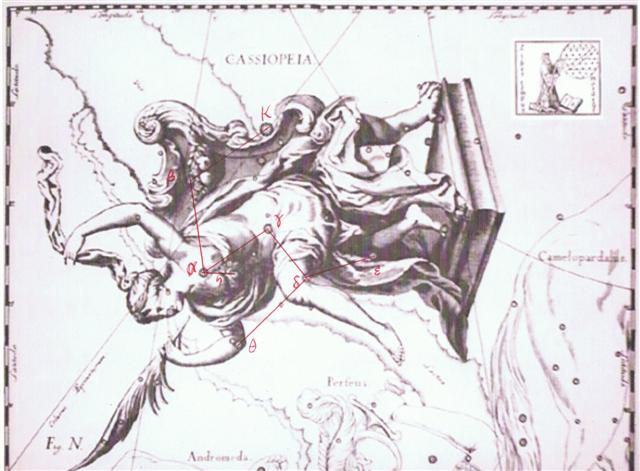We need the stars and the 'star pillars'. But first I have to add the culmination of Sadalmelik (the lucky king) in the midnight of October 9:
Day 647 = 282 + 365. And from the culmination of Regulus (the little king) to the culmination of 'the lucky king' there were 647 - 461 = 186 days, i.e. 6 months with 31 days in each. This is not the same distance as that between their heliacal dates, which is only 182 days:
Midnight culminations are not distributed over the year in parallel with the heliacal (or the nakshatra) dates. Al Dafīrah (199.4) + 3.0 = σ Virginis (200.4) + 2.0 = ι Centauri (201.4) + 1.0 = Mizar (202.4) = Sheratan (27.4) + 175.0. Mizar is ζ Ursae Majoris, very close to Alcor (80). This number in combination with the vibrations from the letter 'zayin' and the arrangement of the quartet of '0.4 stars' suggests the first 5 glyphs in line Cb8 could correspond to the 5 dark extraordinary nights of creation when Nut gave birth to 5 gods. The midnight culmination of the star Sadalmelik can also be thought of as an extraordinary night. If the heliacal date corresponds to birth (*) and the midnight culmination to death (†), then 'the life' measured 647 - 335 - 80 = 232 days, and 29 * 8 = 232. For Regulus his life-span would have been 461 - 153 - 80 = 228 = 12 * 19 days. Cb8-5 is the last moko in this series:
The moko in Cb8-5 is special, because of its upraised arms, and furthermore both its feet are invisible. Ksora is δ Cassiopeiae. Is her left knee going to be severed from her body by the following spear? Her right arm seems to be more lucky (θ).
... The great goddess gave the infant her finger instead of breast to suck and at night, having placed him in a fire to burn away all that was mortal, flew in the form of a swallow around the pillar, mournfully chirping. But the child's mother, Queen Astarte, happening in upon this scene, shrieked when she spied her little son resting in the flames and thereby deprived him of the priceless boon. Whereupon Isis, revealing her true nature, begged for the pillar and, removing the sarcophagus, fell upon it with a cry of grief so loud that the queen's child died on the spot. Sorrowing, then, the two women placed Osiris's coffer on a boat, and when the goddess Isis was alone with it at sea, she opened the chest and, laying her face on the face of her brother, kissed him and wept. The myth goes on to tell of the blessed boat's arrival in the marshes of the Delta, and of how Set, one night hunting the boar by the light of the full moon, discovered the sarcophagus and tore the body into fourteen pieces, which he scattered abroad; so that, once again, the goddess had a difficult task before her ... The gesture of arms raised high in the last moko could be the same gesture as that of to the raised up arms of Queen Cassiopeia (cfr also her left hand). Her 4th limb, her right leg, was at her back and in the shadows:
Severed legs, knees, arms, or other important members, appear to once have been a well-known Sign:
It could mean that to passing through a door (Δ), is dangerous: "The Symplegades or Clashing Rocks, also known as the Cyanean Rocks, were, according to Greek mythology, a pair of rocks at the Bosphorus that clashed together randomly. They were defeated by Jason and the Argonauts, who would have been lost and killed by the rocks except for Phineus' advice. Jason let a dove fly between the rocks; it lost only its tail feathers. The Argonauts rowed mightily to get through and lost only part of the stern ornament. After that, the Symplegades stopped moving permanently." (Wikipedia) | |||||||||||||||||||||||||||||||||||||||||||||||||||||||||||||||||||||||||||||||||||||||||||||||||||||||||||||||||||||||||||||||||||||||||||||||||||||||||||||||||||||









